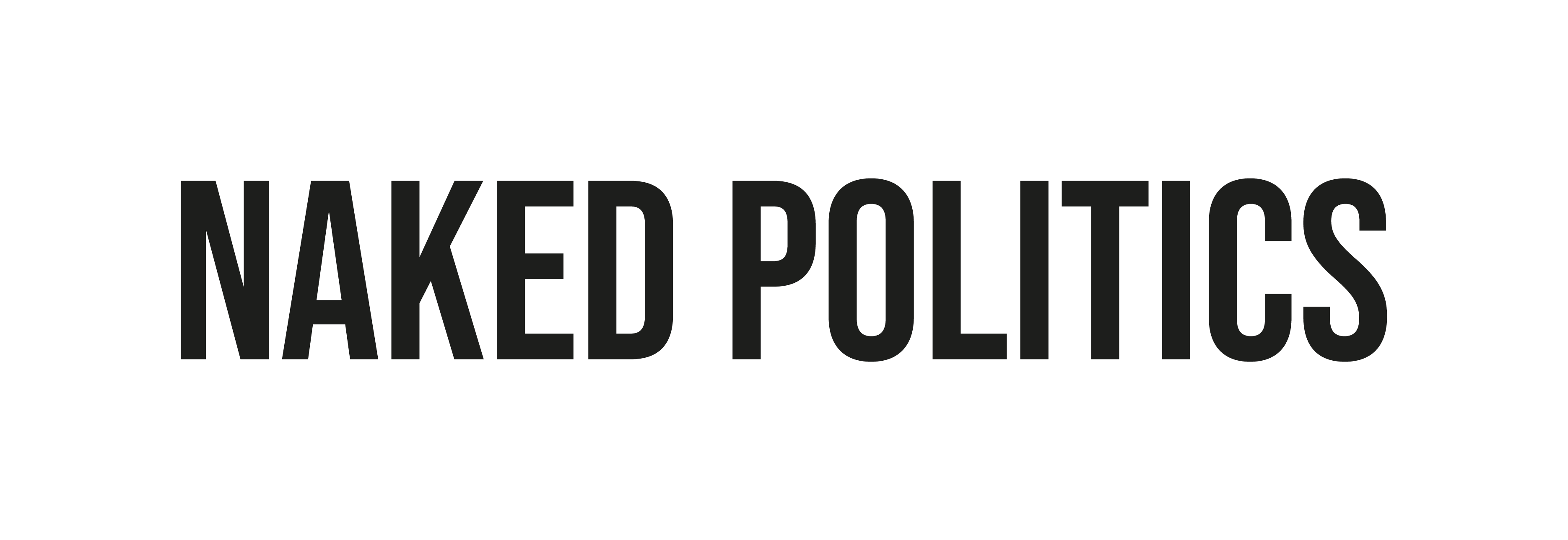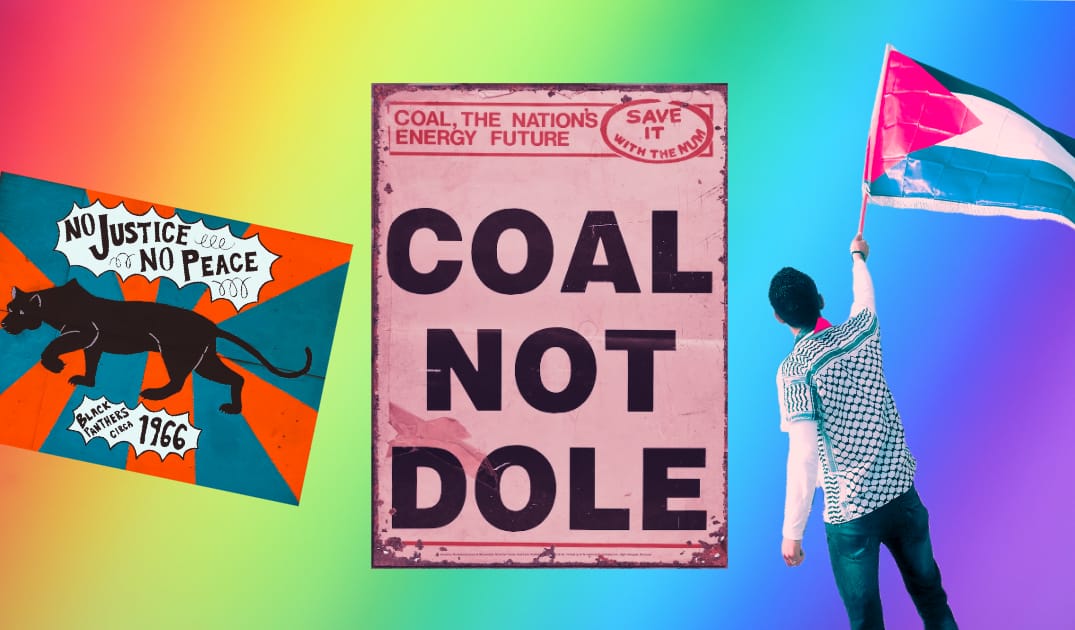Queer liberation movements have their roots in working with other oppressed groups for political change. Should we be calling for more coalition building this Pride?
The first Pride march in the UK was in 1972. There had been smaller scale marches before for LGBTQ rights, but this was the first described as “Gay Pride”. Early photos of Pride parades show protesters with signs such as ‘homosexuals are revolting’ and ‘we demand the right to show affection in public’. Early Pride parades tended to focus on political goals, such as fighting being overpoliced, or the categorisation of homosexuality as a mental illness. Frequently the goals were linked to the manifestos of organisations behind the parades such as The Gay Liberation Front.
Fast forward to today and Pride in London is an event that draws millions of people, and pride celebrations occur across the country every June. As Pride has become more mainstream, there has been an argument made that it has lost its radicalism. Big corporate banks and the police for example are regular participants in the march, and other queer-led events have been questioned for accepting unethical corporate funding.
Trans writer Shon Faye has been critical of this mainstreaming of Pride, calling for its soul to be “restored” by focusing on solidarity with Palestine. “Naming Palestine at Pride events, by boycotting and encouraging others to do so and by being visible as LBGTQ+ people at Palestine solidarity events and marches. Trans liberation is queer liberation is palestinian liberation”. The idea that rights for queer people are inseparable from the wider fight for human rights across the world is a powerful one. Marsha P. Johnson, who was instrumental in the trans and queer liberation movement, once said there is "no Pride for some of us, without liberation for all of us".
So, looking beyond corporate or individual allyship and into movements based on solidarity between marginalised groups of people, how have queer liberation movements worked in coalition with others to achieve political change?
Pride and the Miners Strike
London Lesbians and Gays Support the Miners (LGSM) was formed in 1984, during the miner’s strike. The founders organised donations at Pride for striking miners and their families, after thousands of them refused to continue working in protest of planned mining pit closures by the then Prime Minister Margaret Thatcher.
LGSM groups were formed in ten towns around the UK, and money was raised from queer people primarily outside gay pubs and outside the Gay’s The Word bookshop in London. The single biggest fundraising event organised was the ‘Pits and Perverts’ benefit at London’s Electric Ballroom, on 10 December 1984, which raised £5,650.
As a result of this solidarity, The National Union of Miners and the mining communities of South Wales joined LGSM at the head of the June 1985 London Pride march and the NUM supported lesbian and gay equality at the 1985 Labour Party Conference.
The Rainbow Coalition and Gay Liberation
The Black Panther Party was a revolutionary political movement founded in 1966 by Huey P. Newton and Bobby Seale. They are perhaps most famously known for their advocation of gun rights for black Americans, as a form of defence against the violent racism they faced particularly from the police. However they also focused on anti-capitalism, providing free breakfast programmes for all school children, free legal aid, free shoes for poor people and calling for slavery reparations for black Americans.
Instrumental to their approach was building coalitions with other political groups. The Rainbow Coalition was an anti-racist, working-class multicultural group, which included William "Preacherman" Fesperman of the Young Patriots Organisation (for poor white people) and José Cha Cha Jiménez, founder of the Young Lords (for poor Puerto Ricans). The aim of the coalition was to help these separate groups work together to achieve similar aims.
The Young Lords Party decided to create an internal gay caucus in 1970. One of its first members was the Latinx trans Stonewall protestor Sylvia Rivera, who stated “ They gave us a lot of respect. It was a fabulous feeling for me to be myself — being part of the Young Lords as a drag queen.” The Young Lords Party also held its own inquiry into the suspicious death of a Black gay prisoner named Raymond Lavon Moore.
Speaking in 1970, Huey P. Newton explicitly called for the Black Panther Party to recognise and work with gay liberation movements. “We have not said much about the homosexual at all, but we must relate to the homosexual movement because it is a real thing. And I know through reading, and through my life experience and observations that homosexuals are not given freedom and liberty by anyone in society. They might be the most oppressed people in society.”
He also called for an end to the use of offensive terms against homosexuals and advocated for “full participation of the gay liberation movement” within Black Panther rallies and demonstrations.
The movement towards greater solidarity between these groups was not without its hurdles, but many saw the value of working together to create political change.
Gay Liberation Front Manifesto (1971)
Offering a radical critique of both homophobia and sexism, the Gay Liberation Front’s 1971 Manifesto demonstrates that the oppression of homosexuality and gender are inextricably linked. It was written by grassroots activists and according to LGBTQ activist Peter Tatchell “the final text was a compromise between these different factions” as is often the case with coalitional politics and went beyond just seeking “equality” but “; seeing society as fundamentally unjust and seeking to change it, to end the oppression of queers – and straights”
“We will work to form a strategic alliance with the women’s liberation movement, aiming to develop our ideas and our practice in close interrelation. In order to build this alliance, the brothers in gay liberation will have to be prepared to sacrifice that degree of male chauvinism and male privilege that they still all possess.” The manifesto makes it clear that gender roles play an oppressive role for both queer people and women: “By our very existence as gay people, we challenge these roles. It can easily be seen that homosexuals don’t fit into the stereotypes of masculine and feminine and this is one of the main reasons why we become the object of suspicion, since everyone is taught that these and only these two roles are appropriate”.
Through a coalitional approach, the Gay Liberation Front pushed ground breaking ideas rejecting assimilation into the status quo and embracing a better, more liberated world for all.
Palestinian Liberation
According to Dr Dr. Sa'ed Atshan, a professor of Anthropology and Peace and Conflict Studies at Swarthmore College and author of Queer Palestine and the Empire of Critique: “the queer Palestinian movement was born in the early 2000s…it’s very, very clear that we are witnessing a resurgence of global queer solidarity with Palestinians.”
In 2021, Berlin held its first ever anti racist, anticolonial Pride march. According to the organisation Boycott Divestment Sanctions, 10,000 people attended the march organised by a coalition including QuARC, Bloque Latinoamericano, Migrantifa Berlin, Jewish Bund, Palestine Speaks, Constellation of Liberation, Berlin Migrant Strikers, BDS Berlin, and Berlin Against Pinkwashing.
In 2023 activists in Malta protested a concert performance of Israel cultural ambassador Netta Barzilai at EuroPride.The activists waved Palestinian flags and held signs condemning the pinkwashing of Israeli apartheid and occupation.
In the UK, the group Queers for Palestine organise a queer bloc at the national pro palestine protests, to ensure there’s a visible queer presence. The app Queering The Map which documents queer people and their experiences globally, went viral for capturing heartfelt moments of palestinian queer people in Gaza shortly after the Israeli military action in October began.

